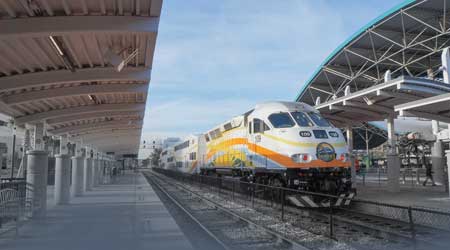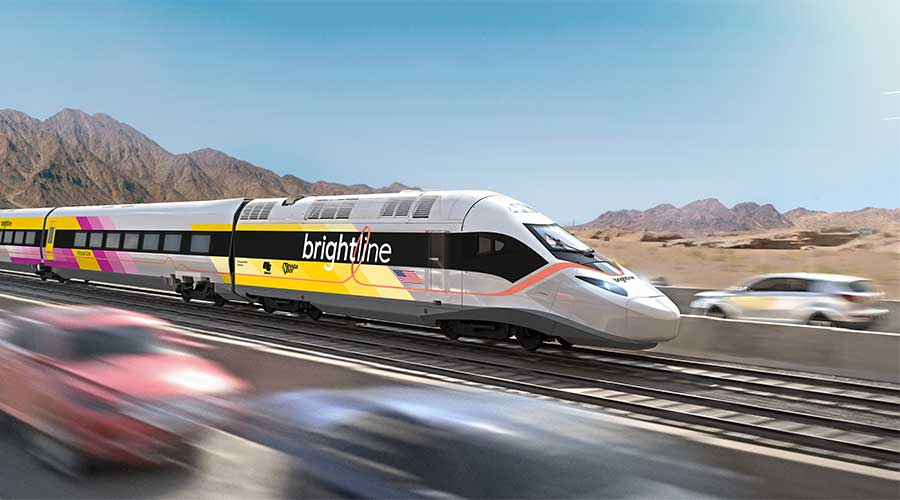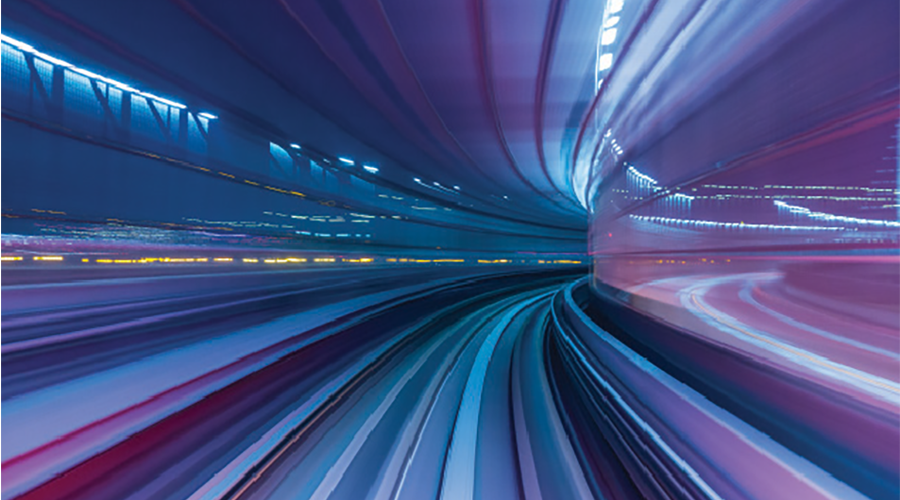Stay updated on news, articles and information for the rail industry
October 2018
Part 1 : Progressive Railroading's Passenger Rail at a Glance 2018: Preface
Part 2 : Progressive Railroading's Passenger Rail at a Glance 2018: Amtrak, California, & Colorado
Part 4 : Progressive Railroading's Passenger Rail at a Glance 2018: New Jersey, New York, Ohio & Oregon
Part 5 : Progressive Progressive Railroading's Passenger Rail at a Glance 2018: Pennsylvania, Texas, & Washington
Rail News: Passenger RailProgressive Progressive Railroading's Passenger Rail at a Glance 2018: Pennsylvania, Texas, & Washington

PENNSYLVANIA
Southeastern Pennsylvania Transportation Authority
SEPTA is the nation’s sixth largest public transportation system with an extensive network of fixed route services that include bus, subway, trolley, trackless trolley, high-speed and regional rail serving a 2,202-square-mile service region. That service region includes five Pennsylvania counties (Philadelphia, Bucks, Chester, Delaware and Montgomery) and extends to Trenton, New Jersey and Newark, Delaware. SEPTA employs 9,000 workers, making the agency one of the region’s largest employers.
Service launched: heavy rail, 1968; light rail, 1969; commuter rail, 1983. SEPTA was created by the Pennsylvania Legislature in 1964 to consolidate private regional public transportation operators. SEPTA’s predecessor rail agencies began providing passenger service in the late 1800s and early 1900s. The dates shown here reflect the years that SEPTA began operating those modes.
Route miles per mode: Light rail, 42; heavy rail, 47; commuter rail, 280
Rolling stock: locomotives, 8 (average age 27 years); rail cars, 404 (average age 30 years); light-rail vehicles, 167 (average age 35 years)
Cars/locomotives on order: 45 cars, expected delivery 2022; 13 locomotives, expected delivery fall 2018
Annual ridership: light rail, 24,720,500; heavy rail, 93,524,700; commuter rail, 34,355,300
Operating budget: $1.45 billion (FY2018)*
Capital budget: $727.2 million (FY2018)*
Stations: light rail, 8; heavy rail, 75; commuter rail, 154
Major capital improvement projects underway:
• Southwest connection: SEPTA has designed a series of infrastructure improvements near the University City Station. The project includes replacement of 80-year-old catenary, construction or rehabilitation of four interlockings, retiring an interlocking, tie and surface renewal, and signal improvements along a 3-mile segment of SEPTA railroad that’s adjacent to the Northeast Corridor. The improvements are designed to have a positive impact on service on SEPTA’s Airport, Wilmington and Media lines, and will be constructed between now and 2020. In summer 2018, SEPTA performed a two-week shutdown of the commuter railroad to install major interlocking components.
• Elwyn to Wawa service restoration: SEPTA will restore revenue service on the Media-Elwyn Regional Railroad Line from its current terminus at Elwyn Station to Wawa, Delaware County, Pennsylvania. (Service beyond Elwyn was discontinued in the 1980s.) An early action phase to stabilize embankments on sections of this line was completed in 2010. The second component of this 3-mile service restoration started in spring 2018. This phase will involve significant infrastructure renewal, including retaining walls; the rehabilitation of 9 bridges; and the replacement of track, catenary and structures, and signals. The final component of this project is the construction of a new station, a 600-car parking deck and an intermodal connect.
• Substation program: SEPTA has initiated a multiyear program to rehabilitate the 80-year-old traction power substations that provide electricity to propel vehicles on the Regional Railroad. The first substations to be addressed in this program are under construction and include Lenni and Morton on the Media/Elwyn Line and Jenkintown and Ambler (Main Line). Fourteen additional substations will be overhauled or replaced as part of this program. SEPTA also will be constructing a new substation on the West Trenton Line.
* Information source: septa.org
TEXAS
Capital Metropolitan Transportation Authority*
Capital Metro is the regional public transportation provider of Austin. The agency owns the Capital Metro Railroad, which runs between Giddings and Llano; and operates the Metrorail commuter-rail service, which runs between Leander and downtown Austin.
Established: 1985 by voter referendum.
Miles: 60 heavy rail, 32 commuter rail
Rolling stock: 10 diesel electric trains
Average weekday ridership: 229,300 (Q1 2018)
Operating budget: $250 million (FY2018)
Capital budget: $151.5 million (FY2018)
Stations: 9 commuter rail
Major capital improvement projects: refurbishing rail cars, developing a new downtown station, potentially expanding and/or moving stations along the 32-mile Metrorail line; double-tracking.
* Information sources: capmetro.org, APTA Transit Ridership Report
Dallas Area Rapid Transit
Dallas Area Rapid Transit (DART) is the transit provider for Dallas and 12 other North Texas cities. The agency operates light rail, bus and paratransit services. It co-owns the Trinity Railway Express commuter-rail with Trinity Metro, formerly the Fort Worth Transportation Authority.
Service launched: Light rail, 1996
Route Miles: light rail, 93
Rolling stock: 163 light-rail vehicles, average age 13.84 years
Annual ridership: Light rail, 30.1 million
Operating cost: $904.6 million (FY2018 budget)
Capital cost: $980.4 million (FY2018 budget)
Stations: 64
Major capital improvement projects underway:
DART will continue work on the D2 Subway, a second light-rail alignment through downtown Dallas and the platform extension of 28 light-rail stations outside downtown Dallas.
Metropolitan Transit Authority of Harris County
The Metropolitan Transit Authority of Harris County (METRO) is the Houston region’s largest public transit provider, offering transportation services about 370,000 times per day. METRO operates more than 1,400 buses and 23 miles of light rail. METRO’s services include Star Vanpool, METROLift, HOV lanes, HOT lanes, Bikes-on-Buses/Trains program, park and ride, and road improvement projects.
Service launched: light rail, 2004
Miles: light rail, 23
Rolling stock: 76 light-rail vehicles, average age 6 years old.
Annual ridership: 18,532,122 (2016)
Annual operating budget: $35.2 milion
Annual capital cost: $7.2 million
Stations: 44
Major capital improvement projects underway:
No major rail-related capital improvement projects underway or scheduled to begin in FY2019. There are a few minor rail projects that will start in FY2019. The ROC storage track buildout and rail-tie replacement, Legacy Redline drainage improvements and rail tie replacement, Traction power pull box and OCS motor operated disconnect upgrades as well as the Traction Power Substation (TPSS) replacement damaged by Hurricane Harvey. The combined total for all minor projects is approximately $30 million. Contracts are not let at this time. Construction will run from 2019 to 2021.
Trinity Railway Express
Trinity Railway Express (TRE) is jointly owned by Dallas Area Rapid Transit and Trinity Metro, formerly the Fort Worth Transportation Authority. It is a 34-mile commuter rail line linking the downtowns of Dallas and Fort Worth.
Service launched: 1996
Route Miles: 34
Rolling stock: 9 locomotives, average age 24 years; 17 bi-level coaches, average age 30 years; eight bi-level cab cars, average age 14 years.
Annual ridership: 2 million
Annual operating cost: $26 million (FY2018)
Annual capital cost: $15 million (FY2018)
Stations: 10
Major capital improvement projects underway:
• Dallas County’s Medical District Drive project. Involves widening the existing road under the TRE bridges from 4 lanes to 6 lanes. The TRE 2 bridges will be extended to allow for the roadway expansion below. Estimated cost: $26 million. Estimated completion: Second-quarter 2020.
• TRE Trinity River bridge project, in Fort Worth, Texas. Involves adding 4,000 feet of second track, including 4 new bridges and rehabilitation of the existing bridge over the Trinity River, which was originally built in 1904. Estimated cost: $24.2 million. Estimated completion: second-quarter 2020.
WASHINGTON
Sound Transit
Sound Transit plans, builds and operates regional transit systems and services to improve mobility for Central Puget Sound.
Service launched: Commuter rail, 2000; light rail, 2009
Route Miles: commuter rail, 81; light rail, 20
Rolling stock: 14 locomotives, average age 16 years; 58 rail cars, average age 15 years; 62 light-rail vehicles, average age 11 years
Cars/locomotives on order: 152 light-rail cars on order, with expected delivery in second-quarter 2019 through third-quarter 2024
Annual ridership: light rail, 23,186,633; commuter rail, 4,438,374
Cost per boarding: Calculated as the total actual operating costs before depreciation divided by the total number of riders: light rail, $4.21; commuter rail, $10.31.
Operating budget: $467.8 million (2018)*
Projects budget: $1.9 billion (2018)*
Stations: 16 light rail, 12 commuter rail
Major capital improvement projects underway:
• Light-rail extension to Northgate. The Northgate Link Extension travels north from the University of Washington with 2 tunneled and 1 elevated stations. A major bus transit hub north of Seattle, the Northgate area features North
Seattle College, a shopping mall, medical facilities and retail residential transit-oriented development. Tunneling and cross-passages are complete; current work includes station construction, elevated guideway. Completion: 2021. Budget: $1.9 billion. Major contracts: Absher, M.A. Mortenson Construction Co.
• Light-rail extension east of Lake Washington. The East Link Extension travels from downtown Seattle across Lake Washington on floating bridges with a station on Mercer Island and six stations in the Bellevue area for a total of 10 stations over 14 miles. The fifth largest city in Washington, Bellevue has grown over the years from a single-family residential area to major job destination with dense retail and residential development in downtown. The eastern terminus of this extension, Redmond Technology Center Station, is located on the edge of the Microsoft campus. Construction is underway along the entire alignment, including a short tunnel through downtown Bellevue. Completion: 2023. Budget: $3.7 billion. Major contracts: Kiewit-Hoffman Joint Venture, Shimmick/Parsons Joint Venture, Atkinson Construction, Stacy-Witbeck-Atkinson, Max J. Kuney.
• Light-rail extension north to Lynwood. The Lynnwood Link Extension continues light-rail north of Northgate, crossing the border into Snohomish County, adding four stations and 8.5 miles to the system. With 1,500 parking spaces added along the line, it is anticipated that this extension will be used by many motorists eager to reduce time spent in traffic from their northerly commutes. Project is in final design with construction slated to begin this year. Lynnwood City Center will be the northernmost station on the Link line until light rail is extended to Everett by 2036. Completion: 2024. Budget: $2.9 billion. No major contracts yet.
• Light-rail extension south to Federal Way.
The Federal Way Link Extension continues light rail south from SeaTac, approximately 2 miles south of the international airport, to Federal Way on a 7.6 mile primarily elevated alignment with three stations. Federal Way will be the southernmost station on the Link line until light rail is extended across the King County line to Pierce County and Tacoma by 2030. Project is in the final design with construction slated to begin this year. Completion: 2024. Budget: $2.549 billion. No major contracts yet.
• Light-rail extension to downtown Redmond. The Downtown Redmond Extension continues light rail beyond the East Link extension opening 2023 to downtown Redmond on a 3.5-mile elevated and at-grade alignment with two stations. Project is in the planning stage with construction scheduled to begin in 2019. Completion: 2024. Budget: $949 million to $1.02 billion. No major contracts yet.
• Hilltop Tacoma Link Extension. Tacoma Link is a separate in-city light-rail line serving neighborhoods in Washington’s third largest city. Currently with six stations, the Hilltop Tacoma Link Extension adds six more, connecting the city’s Hilltop neighborhood to the Tacoma Dome Sounder commuter-rail station. The extension adds 2.4 miles of double tracks running in mixed traffic. Completion: 2022. Budget: $217 million. Major contract: Walsh Construction.
• Light-rail extensions to West Seattle and Ballard neighborhoods, rail tunnel through downtown Seattle. The West Seattle and Ballard Link extensions continue light-rail west and northwest of downtown Seattle through major employment, cultural and residential centers. A new rail tunnel through downtown Seattle is part of the Ballard Link extension, providing needed capacity for the entire regional rail system to operate efficiently. West Seattle Link Extension adds 4.7 miles and three stations to the system on a preliminary elevated alignment. The Ballard Link Extension and downtown tunnel add 11.8 miles of tunneled, at-grade and elevated alignment with 10 new and four expanded stations. Project is in the initial startup phase. Completion: West Seattle, 2030; Ballard and downtown tunnel, 2035. Budget: West Seattle Link, $1.43 billion ton $1.53 billion; Ballard Link, $2.38 billion to $2.55 billion; downtown Seattle tunnel: $1.64 billion to $1.75 billion. No major contracts yet.
• Light-rail extension south to Tacoma Dome. The Tacoma Dome Link Extension continues light rail south from Federal Way, across the Pierce County line to the Tacoma Dome station on a 9.7-mile primarily elevated alignment with four stations. In addition to being a regional destination for sports and concert events, Tacoma Dome is a multimodal hub serving Link light rail, Sounder commuter rail and Tacoma Link. Project began initial startup phase in 2017. Completion: 2030. Budget: $1.89 billion to $2.03 billion. No major contracts yet.
• Eastside light-rail operations and maintenance facility. Sound Transit is building an operations and maintenance facility (OMF East) in Bellevue needed to support expansion of the region’s light-rail system to east of Lake Washington. Portions of the construction staging area will be developed for transit-oriented uses. Project is in final design. Completion: 2020. Budget: $449 million. Major contract: Hensel Phelps.
• Sounder South commuter-rail station parking, access improvements. This project will improve parking and access at four stations along the Sounder South commuter-rail line. Completion: 2021-2023. Budget: $237.6 million, total for all four projects. No major contracts yet.
• Sounder north commuter-rail station parking, access improvements. This project is to improve parking and access at two stations along the Sounder North commuter-rail line entered initial startup phase in 2017. Completion: 2024. Budget: N.A. No major contracts yet.
* Information source: Sound Transit’s 2018 adopted budget
Keywords
Browse articles on passenger rail Pennsylvania Texas Washington Southeastern Pennsylvania Transportation Authority SEPTA Capital Metropolitan Transportation Authority Cap Metro Dallas Area Rapid Transit DART Metropolitan Transit Authority of Harris County METRO Trinity Railway Express TRE Sound TransitContact Progressive Railroading editorial staff.


 2025 MOW Spending Report: Passenger-rail programs
2025 MOW Spending Report: Passenger-rail programs
 Gardner steps down as Amtrak CEO
Gardner steps down as Amtrak CEO
 Guest comment: Oliver Wyman’s David Hunt
Guest comment: Oliver Wyman’s David Hunt
 Women of Influence in Rail eBook
Women of Influence in Rail eBook
 railPrime
railPrime







